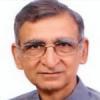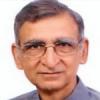A VHP spokesperson, Surendra Jain (June 7th) stated that the Church in India is trying to destabilize Modi Sarkar. This was in the backdrop of the statements by two Archbishops, the one of Delhi and other from Goa. Archbishop of Delhi, Anil Couto, on 8th May 2018 addressed a letter to all parish priests and religious institutions in the Archdiocese of Delhi asking them to pray for ‘our nation’. The letter begins with the observation “[w]e are witnessing a turbulent political atmosphere which poses a threat to the democratic principles enshrined in our Constitution and the secular fabric of our nation”. The letter then requests the 138 parish priests and 5 religious institutions within Delhi to observe ‘a Day of Fast every Friday ... offering our penance and all our sacrifices for our spiritual renewal and that of our nation.’ While The Archbishop of Goa and Daman Filipe Neri Ferrao said that human rights are under attack and the Constitution is in danger, and it is the reason as to why most people live in insecurity. Ferrao, in his annual pastoral letter addressed to “priests, religious, lay faithful, and people of goodwill”, asked Catholics to “play an active role in the political field” and to “shun sycophantic politics”. “As the general election is fast approaching, we must strive to know our Constitution better and work harder to protect it,” and added “democracy appears to be in peril”.
Both the letters in a way are an expression of the cry of anguish of the plight of religious minorities. The anti minority violence has seen a quantitative and qualitative worsening during last few years. While anti-Christian violence is not spectacular and many a national commentators even question its occurrence, the fact of the matter is that low level scattered anti Christian violence is around, most of it not reported in the national media. Incidentally the World Watch List 2017 ranks India ranks India 15th worst among nations where Christians are persecuted. Four years ago, India ranked 31st on the list.
Vijayesh Lal of ‘Evangelical Fellowship of India’ states that ‘it has documented some 350 cases of violence and other forms of persecution against Christians last year. That is more than double the rate compared with the 140 annually before the BJP assumed power. This is highest since an anti-Christian pogrom in the state of Odisha in 2008.
Interestingly around Christmas in 2017; Carol singers were attacked and cases against them were filed on the charges of conversion in MP. The community leaders point out that in their observation such incidents have gone up, more so as the ground level leaders are not reprimanded from the top leading to increase in the culture of impunity.
The violence against the other big minorities; Muslims also has shown a rise in 2017. In 2014 we witnessed (no of deaths in brackets) 561 incidents (90), 2015-650 (84), 2016-703 (83), 2017- 822 (111). The frightening nature of lynchings in the name of Holy Cow or beef eating has also shown a dangerous rise. According to the data collected by IndiaSpend, based on the content analysis of media reporting, “Muslims were the target of 51% of violence centered on bovine issues over nearly eight years (2010 to 2017) and comprised 86% of 28 Indians killed in 63 incidents. As many of 97 per cent of these attacks were reported after Prime Minister Narendra Modi’s government came to power in May 2014, and about half the cow-related violence — 32 of 63 cases –were from states governed by the Bharatiya Janata Party (BJP) when the attacks were reported, revealed our analysis of violence recorded until June 25, 2017.”
So while VHP spokesperson is just one example, most of those from Hindu nationalist politics have been challenging as to how Church leaders can make statements which have political implications, how can they give their opinion on issues which can affect the political outcome? One knows that Church leaders have mostly not been making political comments till one witnessed the brutal murder of Pastor Graham Stains in Keonjhar, in Orissa in 1999. Since then some from the clergy did express the feelings, hurt and injury of the community in the wake of this violence directed against the Christian minority. Generally the Church leaders had been focusing on their prayers and the community work in a quiet manner. It is only after the rise of the violence that some of them started speaking on this topic.
The overall atmosphere has been becoming more intolerant, more frightening and Muslims and Christians both have been on the receiving end. Can these men of god speak on Earthly matters? It is true that Yogi should not be a commissar; yogi should not be in the business of business! The secular and profane worlds are different. In societies like ours, which are not fully secularized; clergy does have a hold over society in worldly matters also. We know how series of Hindu Godmen and women are dominating figures in Hindu nationalist politics. VHP, whose spokesperson is reacting to Archbishops statement; itself is a religious adjunct to RSS combine with political agenda of Hindu Rashtra. We have number of holy people who either directly or indirectly aid to the electoral and other politics. Starting from the likes of Karpatri Maharaj, who aggressively campaigned against Hindu Code Bill, we also saw Sadhus who took the issue of ban on cow slaughter to higher prominence by march to parliament in year 1966.
In current times we have politicians, wearing saffron, contesting elections and being part of politics all around. Likes of Sadhvi Uma Bharati, Sadhvi Nirnajan Jyoti, Yogi Adityanath and Sakshi Maharaj are ruling the political roost while wearing divinity! There are number of Maulanas, who have held the political arena, beginning with Maulana Azad himself. To reprimand the Archbishops to express just their opinions is very unfortunate. As they also are citizens they should be concerned about the social issues too.







Comments
Add new comment